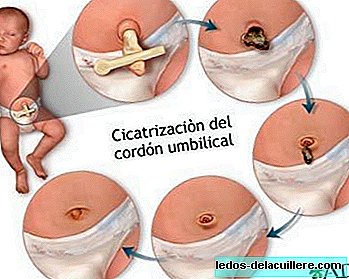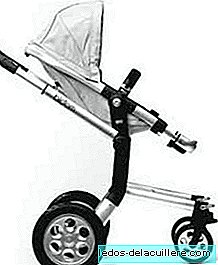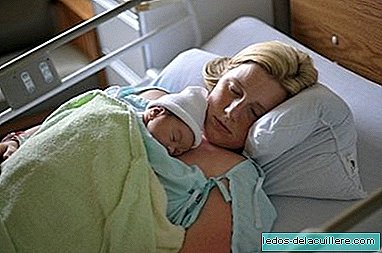
We saw that it was common for the cord to detach between the second and third week of life and for healing to be normal, even if there was slight bleeding in the navel. However, there are some situations that should put us on notice for possible complications, certain navel abnormalities of the newborn.
The late fall of the umbilical cord
If a month passes and the cord has not fallen, in the absence of other pathologies, one could think of a deficit in the adhesion of neutrophils, a type of white blood cell. You have to go to the pediatrician to assess the situation and make the appropriate diagnosis.
Umbilical hernia
If the scar after the cut of the cord does not close properly, a small section of the intestine can exit through the umbilical ring producing an umbilical hernia, a soft bump that can be seen around the baby's navel.
It is caused by a failure or defect in the wall of the belly (like an eyelet) that allows the exit of that portion of the intestine. It can be minimal ("hernia tip") or giant (several centimeters in diameter and of prominence or bulge)." Omphalocele "is mentioned if the hernia is large and is not covered with skin but a thin transparent layer.
Omphalitis or navel infection
We have already talked about omphalitis or infection of the navel of the newborn, which is recognized because there is redness and hardening of the skin around the navel, accompanied by suppuration or bloody and smelly discharge.
It occurs rarely, and is usually mild, although there may be cases with complications. That is why you have to go to the pediatrician at the slightest sign of infection.
Umbilical granuloma
Other times, when the cord falls, at the bottom of the navel is a small pink and bright lump, similar to a cherry, called "granuloma." It can be cured with silver nitrate applications, but we must first consult with the pediatrician (it can be another type of disease).
Navel cutaneous and proboscis
Another one of the anomalies of the navel of which we have spoken to you have been the cutaneous and proboscis navels of the newborn. It occurs when a portion of cord skin sticks out. If its size is short, it usually disappears over time (cutaneous navel), but if it is long and with a tubal shape (proboscis navel) a surgical intervention may be necessary.
These are the most frequent abnormalities in the navel of the newborn, which must be valued and treated by specialists.












